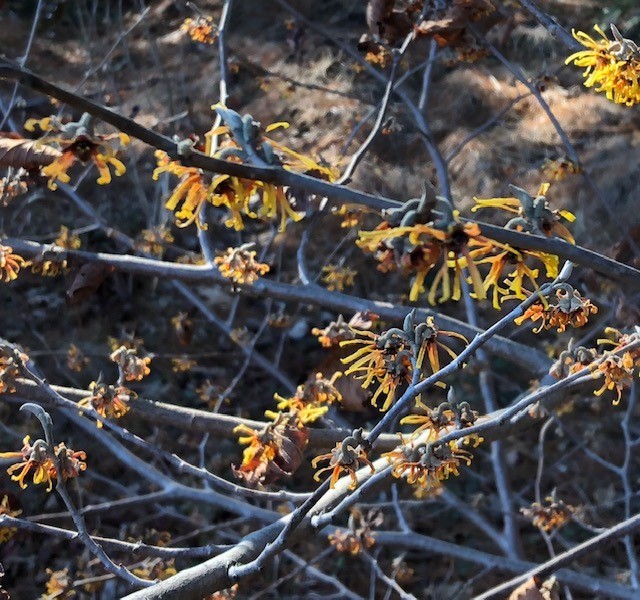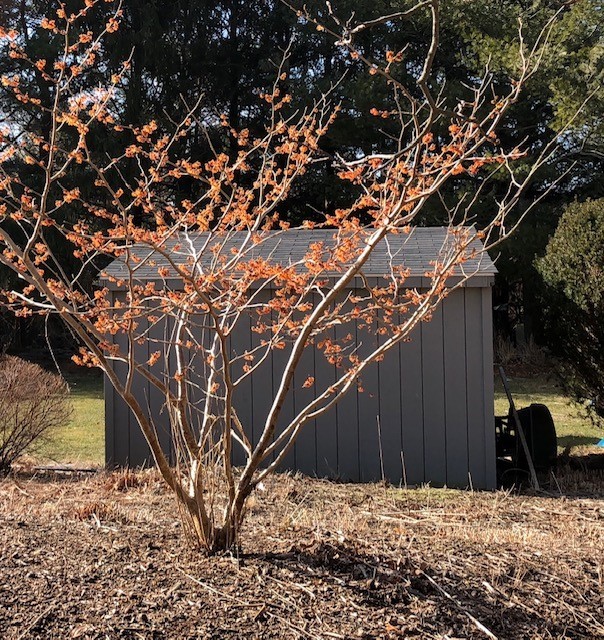Blog
A Note From Rick | February Sets the Stage for the Spring Garden
By Rick Bogusch
Winter Activities In and Out of the Garden
What happens in the garden during the weeks of February depends on the weather: how cold it gets and how frozen the ground becomes. If it’s warm enough, mulching, digging, edging, even weeding can be tasks at hand. Otherwise, it’s pruning or finishing up seed orders, rounding up supplies, and getting set up for first sowings indoors and in the garden.
Speaking of seeds, did you know now is a good time to sow poppy seeds for blooms in June? Simply scatter seeds on top of the ground where you’d like them and that’s it! They need bare soil to germinate, so scrape away any mulch before sowing and do not mulch afterwards. The poppies at Bridge Gardens appear reliably in the herb garden and are a favorite for all, including our winged visitors in search of pollen. This picture was taken during the summer months and shows the herb garden in full of color. Don’t despair - there’s color to be enjoyed at Bridge Gardens even in February!
![block.image[0].title](/assets/images/Poppies-1.jpg)
Snow drops have been in bloom since December and are still going strong. When you visit, take note of their creamy white blooms as you walk along the brick path. They are located near the Virginia sweetspire at the entrance to the Inner Garden. This picture shows their blooms after the snow earlier this month.
![block.image[0].title](/assets/images/snowdrops-in-snow.jpg)
Winter jasmine, pictured below, started blooming in January and opens more and more yellow bells every day, sadly not fragrant. But their yellow flowers offer reassurance that spring is on its way.
![block.image[0].title](/assets/images/winter-jasmine2.jpg)
A pair of vernal witch hazels, purchased from Fairweather Nursery in 2010, also offer beautiful winter blooms. A variety called ‘Dishi’ scents the air on sunny days as flowers fold and unfold with the temperature. They’ll soon be followed by another vernal witch hazel with small dark red flowers typical of the species, plus ‘Jelena,’ an Asian hybrid with large coppery fragrant blooms.

Vernal witch hazel 'Dishi' in bloom now

Vernal witch hazel 'Jelena' soon to flower
If you’re feeling stuck indoors, now is a good time for designing your garden. Is there an area of your garden that you’ve been meaning to renovate? Perhaps there’s an area of lawn that can be re-imagined as a new native plant bed or vegetable garden. Now is a good time to make your plan.
![block.image[0].title](/assets/images/flagged-garden-area.jpg)
Whether it’s for small planting projects or locating a future entrance pavilion, or developing plans and estimates for selected segments of the master plan, February snows offer me the chance to plan progress here at Bridge Gardens too. I take advantage of warmer days when the ground is unfrozen to lay out planting designs with color coded stakes. Each one represents one plant, and is spaced according to the size of the plant. That way, I know exactly how many of each plant I need. Sometimes, I lay out a design based on sizes and shapes and decide what they will be later over reference books, catalogs and the internet. Visitors have often asked, “What are those pink flags around the parking lot?” and I explain, “They mark the homes of future inkberries, scheduled to be planted this spring.”
February is also a good time to think about compost. If you’ve been composting, don’t forget to use your “gardener’s gold.” Our compost bins were cleaned out just last week after over a year of tossing in vegetable scraps, dried oak leaves, and green garden waste. I took 10 wheelbarrow-loads to beds in the vegetable garden and then readied the compost bins for the coming season. This entailed adding oak leaves at the bottoms and a stockpile of last year’s garden waste to layer in.
![block.image[0].title](/assets/images/compost-bin.jpg)
However, you spend your “down time” this month, I hope you’ll make plans to join us for our upcoming programs, still virtual at this time. Check out our calendar below, and I look forward to seeing you at the Gardens soon!
~~ Rick

